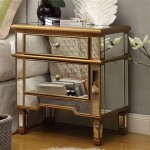How to Hang a Heavy Mirror on a Plasterboard Wall
Hanging a heavy mirror on a plasterboard (drywall) wall requires careful planning and execution to ensure both the mirror's safety and the wall's integrity. Standard picture hooks are often insufficient for heavier mirrors, necessitating more robust hanging solutions.
Key Considerations Before You Begin
Several factors influence the best method for hanging a heavy mirror:
- Mirror Weight: Accurately determine the mirror's weight. This information is crucial for selecting appropriate fixings.
- Wall Type: Confirm the wall is indeed plasterboard. Some older homes might have lath and plaster walls, which require different techniques.
- Stud Location: Locating wall studs provides the most secure anchoring points.
- Mirror Backing: The type of backing on the mirror affects the hanging hardware options.
Essential Tools and Materials
Gathering the necessary tools and materials beforehand streamlines the hanging process:
- Stud Finder: Essential for locating wall studs.
- Pencil: For marking the desired mirror location and screw positions.
- Level: Ensures the mirror hangs straight.
- Drill with Appropriate Drill Bits: For pilot holes and driving screws.
- Screwdriver: For driving screws manually if necessary.
- Heavy-Duty Wall Anchors: Examples include toggle bolts, molly bolts, or hollow-wall anchors. Choose anchors rated for the mirror's weight.
- Screws: Select screws appropriate for the chosen wall anchors and long enough to penetrate the wall stud or provide sufficient grip with the anchors.
- Measuring Tape: For accurate measurements.
- Safety Glasses: Eye protection is crucial during drilling and screwing.
- (Optional)D-Rings or Wire Hanging Kit: If the mirror lacks a suitable hanging mechanism.
Locating Wall Studs
Hanging a heavy mirror directly on wall studs offers the most secure option. Use a stud finder to locate studs behind the intended hanging location. Mark the stud positions with a pencil.
Using Heavy-Duty Wall Anchors
If hanging directly on studs isn't feasible, heavy-duty wall anchors are essential. Different anchor types suit different situations:
- Toggle Bolts: Excellent for heavy items, toggle bolts require drilling a larger hole but provide substantial holding power. Insert the toggle through the hole, tighten the bolt, and the toggle expands behind the plasterboard, distributing the weight.
- Molly Bolts: Another robust option, molly bolts also require a specific drill bit size. The bolt expands the metal sleeve against the back of the plasterboard when tightened.
- Hollow-Wall Anchors: These anchors are inserted into a drilled hole and expand when a screw is driven in, gripping the inside of the plasterboard.
Always choose anchors rated for a weight significantly exceeding the mirror's actual weight.
Attaching Hanging Hardware to the Mirror
Many mirrors come with pre-installed D-rings or wire hanging systems. If your mirror lacks these, install appropriate hardware:
- D-Rings: Attach D-rings to the back of the mirror frame, ensuring they are level and evenly spaced. Position them so the wire (if used) will hang taut but not pull against the top edge of the frame.
- Wire Hanging Kit: Follow the kit's instructions for proper installation. Ensure the wire is rated for the mirror's weight.
Marking and Drilling Pilot Holes
After selecting the hanging method and attaching hardware to the mirror, carefully measure and mark the desired mirror position on the wall. Using a level, ensure the markings are horizontal. Drill pilot holes at the marked locations, using the correct drill bit size for your chosen anchors or screws.
Installing the Anchors and Hanging the Mirror
If using anchors, install them according to the manufacturer's instructions. Then, carefully hang the mirror on the installed anchors or screws. Double-check the mirror's levelness after hanging.
Heavy Mirror Hanging Tips for Plasterboard Walls
Following these tips improves safety and success:
- Overestimate Weight: Always choose anchors and screws rated for a higher weight than your mirror.
- Use Multiple Anchors: For very heavy mirrors, using multiple anchors distributes the weight more effectively.
- Consider Adhesive: For added security, especially with lighter mirrors, consider using mirror adhesive in conjunction with mechanical fasteners.
- French Cleats: For extremely heavy mirrors, a French cleat system offers a robust solution, distributing weight along a wider surface area.
- Seek Professional Help: If unsure about any aspect of the process, consult a professional handyman or contractor.

How To Hang A Heavy Picture On Plasterboard Wall

How To Hang A Very Heavy Picture Or Mirror The Best
How To Hang A 100 Pound Mirror On Drywall Quora

How To Hang A Large Or Heavy Mirror

Gripit Review How To Hang A Heavy Picture On Plasterboard Wall 2

How To Hang A Mirror On Plasterboard Wall Soraya Interiors

Hang A Mirror On Plasterboard Wall Soraya Interiors

How To Hang A Very Heavy Picture Or Mirror The Best

How To Hang A Heavy Mirror

How To Hang A 31kg Mirror On Wall With Bunnings Work Community








